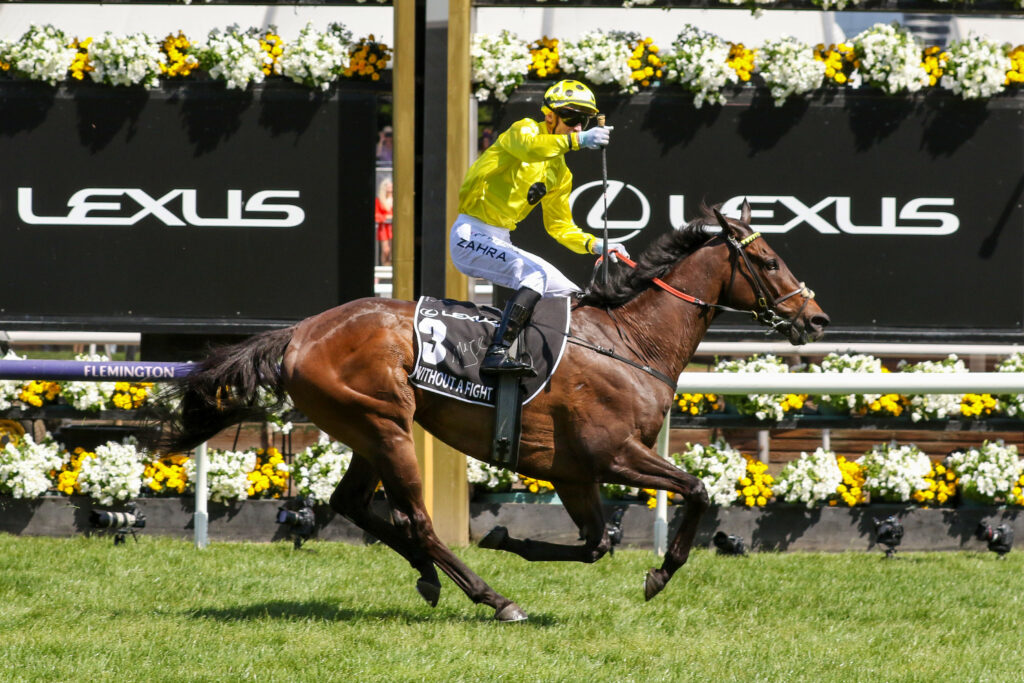BREAKING: 151 horses died on Australian race tracks this season – News Hub

- by Admin
- October 23, 2024


As the nation prepares to stop for the Melbourne Cup, the Coalition for the Protection of Racehorses (CPR) has published its Deathwatch 2024 Report, which highlights 151 recorded deaths on track during the season 2023/’24.
This equates to 3 horses being killed on track every week – and this is only the deaths that CPR can confirm.
Coalition for the Protection of Racehorses (CPR) Campaign Director Elio Celotto says the racing industry’s efforts to hide the deaths of racehorses are greater than ever.
“As horrific as the reported numbers are, the true number of horses killed is much higher”, Mr Celotto said.
“Many horses sustain injuries and are taken off the racetrack and euthanised out of sight. This way their deaths don’t have to appear in Stewards’ Reports. The industry can then record them as ‘retired’ when, in reality, they are well and truly dead.”
In August 2024, right at the start of this year’s racing season, the death of the legendary mare Black Caviar drew much needed public attention to the suffering and exploitation of racehorses off the track, which is usually hidden from the public.
“Like many other mares, Black Caviar was exploited as a breeding machine from the minute she was retired from racing. She produced nine foals in eleven years and was killed after giving birth to her last foal,” said Mr Celotto.
In the endless pursuit to produce that one unique winner, around 18,000 mares are used for breeding every year. The fates of the estimated 3000 mares who retire from their breeding purposes each year are not disclosed by the racing industry.
The Melbourne Cup is also used to promote racehorse ownership, but the truth is that less than 2% of racehorses earn enough money to even cover their costs, meaning it’s a bad deal to be involved in the racing industry for both horses and people.
“Investing” is the term used when buying a racehorse though this is far from the truth. With 98% of racehorses losing money for their owners, its simply gambling with a very low success rate,” Mr Celotto said referring to the 2022 CPR investigation into the profitability of racehorse ownership.
“As the nation prepares to get into party mode for the Melbourne Cup, people need to know they are actually ‘celebrating’ the maiming and murder of magnificent, highly intelligent and sensitive animals on an industrial scale,” Mr Celotto highlights.
“I’m sure the champagne wouldn’t taste so sweet if people were aware of how cruel and abusive this so-called sport is.”
Key Facts:
About the Coalition for the Protection of Racehorses (CPR)
- CPR was established in 2008 to address and raise awareness about the serious animal welfare concerns that are rife throughout Australia’s thoroughbred horse racing industry.
- CPR advocates for horses because the racing industry that uses and abuses them does not.
About CPR’s Deathwatch Report
- Since 2014 CPR has been researching and publishing annual Deathwatch Reports to record the deaths caused by racing-related injuries during the ‘racing year’ from August 1 to July 31.
- CPR monitors every race Australia-wide to gather data on the deaths of racehorses on Australian racetracks to compile each Deathwatch Report.
About Deathwatch 2024 Report
Key findings:
- The race-day related death toll for the 2023/2024 racing year is 151 horses.
- A horse was killed on Australian racetracks every 2.4 days. This equates to three horses being killed on track every week.
- The most common cause of death was from an injury sustained to the horses’ forelimb with 54 deaths attributed to this.
- Seven horses died in their first-ever race, of which two were only two years old.
- Of the horses that were killed, 40.3% had been raced as two-year-olds.
- The state with the highest number of recorded deaths was New South Wales with 48, followed by Victoria, 44, and Queensland with 32.
- The most lethal tracks in Australia were Warrnambool in Victoria and Townsville in Queensland, which each had seven confirmed deaths on track, followed by Kyneton in Victoria and Goulburn in New South Wales, which each had six confirmed deaths.
Cases of the horses that died in the 2023/2024 racing year
- Ava’s Gypsy (two years old, QLD) died past the winning post on her first race at Toowoomba on 23 March 2024. She suffered an injury to her hind leg and was subsequently killed.
- Daskulya (nine years old, SA) was shipped on a boat to race on Kangaroo Island. On 17 February 2024, after his second race there, he collapsed and died from a heart attack. Security officers attempted to conceal Daskulya’s death by instructing the spectators who filmed his collapse to erase their footage.
- Grand Promenade (eight years old, VIC) was the first horse used for jumps racing to die on the track in the 2024 season. He fell heavily at the second last hurdle in Warrnambool on 25 March 2024 and sustained catastrophic injuries. Grand Promenade had already earned his owners over $1.2million in prize money from flat racing and he died in his first ever jumps race.
- Young Liam (seven years old, VIC) did everything he could to show that he did not want to race. In 2020, Young Liam was twice recorded at racetracks as having an irregular heartbeat. In 2022, he received a warning for his racing manners. On 6 October 2023 he reared in the barrier, getting his leg over the partition. On 20 October 2023 he received a warning for being difficult to load and later a suspension for being difficult to load. On 4 December 2023, he was yet again recorded as having an irregular heartbeat. On 9 February 2024, Young Liam completed his last race and collapsed, and was found by the vet to be deceased.
Contact details:
Media Interview co-ordination
Glenda Wynyard
Media Precinct
0410 736 785
Gwynyard@mediaprecinct.com.au
Amisha Piplani
Media Precinct
0482 058 675
apiplani@mediaprecinct.com.au

The Latest News
-
November 26, 2024Payments stuck, stocks on hold, 5 companies worried as Australian retail giant in trouble | Sourcing News India
-
November 26, 2024Keep calm and carry on? It may be time for Australia to shift from default setting after first Test thumping | Geoff Lemon
-
November 26, 2024Singapore Post in Talks Over Australia Business Sale – TipRanks.com
-
November 26, 2024A time for healing: How Phillip Hughes’ family came back to cricket
-
November 26, 2024When is India vs Australia 2nd Test starting? Date and venue listed for next BGT Test | Sporting News Australia




